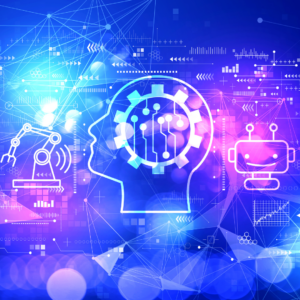Most of “AI” in the news today refers to Generative AI. There are other types of AI out there, like pattern detection, advanced image processing… But I will focus on the Generative AI trends, and more precisely on language applications. Yes, the same “thing” behind OpenAI (ChatGPT), Claude, Llama and other Transformer-based models that leverage self-attention mechanisms and are state-of-the-art in generating human-like text.
We will review some Generative AI trends, techniques and possible applications. Especially for the Talent industry, but not only.
Table of Contents
Generative AI and LLM
Generative AI for text applications is supported by pre-trained LLM (Large Language Models). LLMs are able to interpret an input content and generate another output content. A clear example would be an input prompt to get an “answer” in a chat tool.
Even the models to help coding like Code Llama, to name one, follow the same mechanisms and principles. Indeed, they are Code LLM. Code is just another type of language, isn’t it?

Note: while primarily designed for language, recent developments have begun to expand LLM capabilities to handle multiple types of data simultaneously, such as text and images. It enables richer interactions, understanding, and possibly innovative use cases. This new capability is called Multimodal.
So, if the problem you are trying to solve or scale in your business, fits in this very same logic (input > text content generation), then Generative AI is something to explore. This could be for Chatbot automation, Job description generation / extension, Candidate highlights summarization, etc.
Some LLM limitations
However, for how impressive these models may be in terms of phrasing and structuring a proper syntax, LLM may come short to interpret the input or prompt. They may even have gotten biased on a specific topic. In these cases, the answer may be too vague or just wrong, especially on ambiguous inputs.
On average, LLM give fairly good answers and useful hints on general subjects, summarizing key concepts, detecting the positive / negative tone of an interaction, or just providing a starting point to explore further. But it may not necessarily be enough for your custom business flow, specific topics or tone. Think about a chatbot that would help a customer sort out your services… or browse the type of talent you offer in your platform. Sophisticated prompts with x-shots or context info won’t help neither: the LLM just does not have your very specific data and “touch”.
That is where “Fine-tuning” comes into play.
LLM Fine-tuning
Fine-tuning could be thought of as an extra-training for a LLM, with custom pairs of questions / answers.
You will still get the syntactic power of the LLM, but this time the LLM may tap into the custom knowledge / training data you have fed it with. It shall provide answers more precise and relevant to your specific business cases. It may work well for problems with finite answers / reduced dimensions, like automated Customer care / FAQ, Help, chatbots, etc.
However, it may rapidly get hard to build and maintain … specially if you have the idea to use that for complex, multi-dimensional problems, like talent matching, or request / SOW scoping. For highly dimensional problems, RAG may usually be a better option.
RAG
RAG stands for Retrieval-Augmented Generation.
RAG is one of the most promising Generative AI trend. This method combines the power of large-scale language models like those in the GPT series with the benefits of external knowledge retrieval. For a Talent platform, this custom knowledge could for instance be the corpus of anonymized CVs and JDs data. The idea behind RAG is to combine the strengths of both retrieval-based and generative methods in NLP. While retrieval-based models can pull precise information from existing corpora, generative models can create coherent and contextually relevant responses. By integrating the two, RAG aims to offer more informed and accurate answers, particularly when the LLM might not have been trained on the latest or most detailed information present in the external corpus (which should be the case with sensitive, private data, at least when using external AI services and LLMs like OpenAI).
At use case level for RAG, we could think about JD generation on very specialized topics, or scoping of the client need based on your specific corpus, etc. Some talent platforms include things as diverse as an internal AI-assistant to help sort-out complex compliance issues.
Similarity search
Beyond the “Generative AI” applications, we should also mention another AI technique: the Similarity search.
As the RAG approach, it relies on a specialized vectorial database to store your specific business objects, your corpus of data. For a given input query, this kind of database can efficiently find the closest vectors in the dataset based on a chosen distance metric. Vector databases are built to handle high-dimensional data effectively, where the number of dimensions can be much larger than in traditional databases.
Matching in Talent platforms
In the Talent platforms world, the most direct application of Similarity would be matching the profiles against a given input query, ranking first the profiles whose representations are mathematically closer to the input…
Indeed, a report by SIA states that the most common use case of AI in talent platform is “Matching”.
68% of Talent platforms claim to use AI for Matching *.
Do they refer to AI as any kind of sophisticated “mathematical processing” that performs the ranking of the most-probably suitable candidates for a given Job Description? Or do they truly use an AI-similarity model? In any case, it may be worth pointing out that matching is not only about getting the Profiles with more semantic/contextual proximity to a JD. Availability, client feedbacks, vetting data points, cultural fit, recency / trust on available info… are some other very relevant deterministic criteria, that these similarity models do not naturally handle very well. Without even talking about maintaining the data synchronized and constantly re-embedded. A pure Similarity approach may also bring too many false positives.
* in the same SIA report, when asked whether there is a human layer involved in the matching and curation of talent, a large majority (85%) of talent platforms indicated there is indeed a human layer included. The result contradicts somehow a common misconception that talent platforms are purely self-service models. It also reflects a trend for this category becoming increasingly service oriented. Technology is being used to augment, rather than replace humans in matching candidates with work, particularly when engaging with larger enterprise clients.
So if you already have a precise “mathematical processor” that handles the matching and ranking fairly well, taking all your data points and deterministic criteria into account and dealing well with false-positives, then a pure AI-similarity approach may be counter-productive or not differential, nor “explainable”, nor tweakable, and possibly very demanding on maintenance and “regularization” (a founding principle of AI, somehow its ability to adapt to new data coming into play).
Which Generative AI trends should we prioritize?
No need to say it may be overwhelming to follow every hot topic in AI. In this post we have just scratched the surface of some Generative AI trends for text and languages. These and their underlying principles have already mind-blowing practical applications. Still, other techniques or approaches should keep popping out, Knowledge Graphs combined with LLM being a promising one. For Talent platforms or any other business, exploring them makes a lot of sense.
In any case, Generative AI should be a game changer and make a real difference on scalability / productivity.
Head of Product & CTO, partner at Outvise. Industrial Engineer by ENSAM. Has led the creation of various digital platforms from scratch, as consultant or partner, in Startups and Corporates. Combining strong tech, marketing and strategy skills, Fred is an enthusiast of UI/UX and automation, to build usable, friendly and scalable digital products.




No comments yet
There are no comments on this post yet.